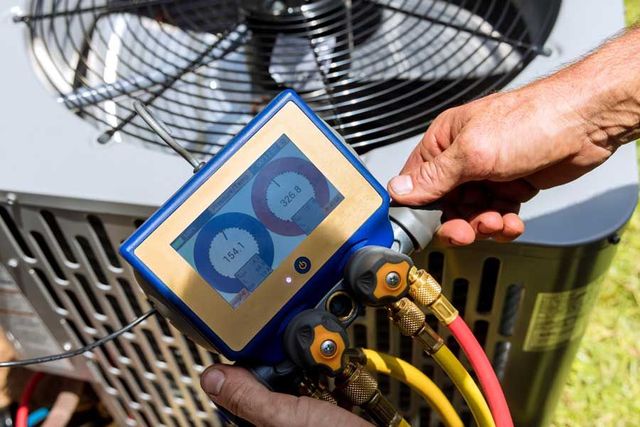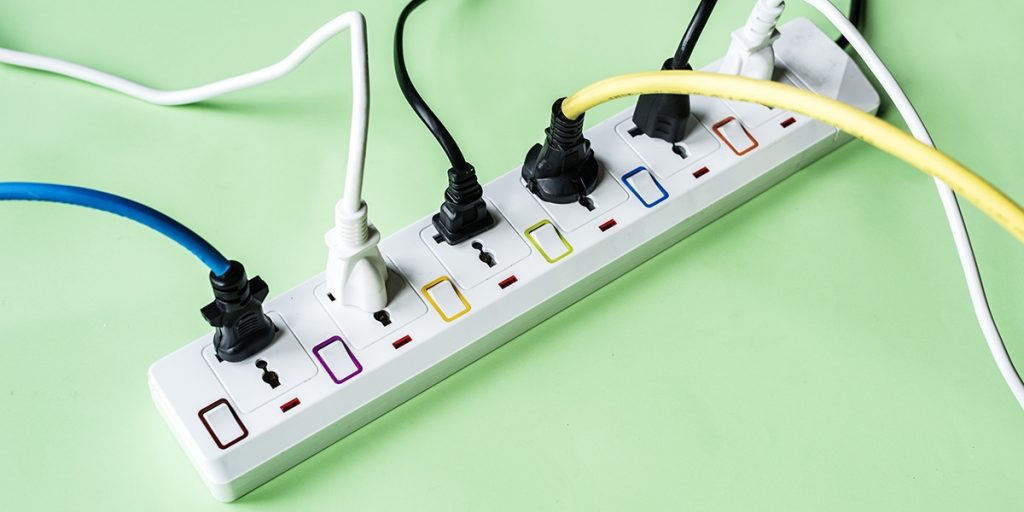Are you wondering if you can plug your air conditioner into a power strip? It might seem like a simple solution to get extra outlets, but the answer isn’t as straightforward as you think.
Using the wrong setup can lead to serious problems, from tripping breakers to damaging your AC unit. Before you make a decision, it’s important to understand the risks and the right way to power your air conditioner safely. Keep reading to find out what you need to know to protect your home and stay cool without any surprises.

Credit: www.hickoryheatingandcooling.com
Air Conditioner Power Needs
Air conditioners need a lot of power to run. Most small units use about 500 to 1500 watts. Larger models can need 2000 watts or more. The amperageshows how much current the unit draws, usually between 5 and 15 amps.
Power requirements matter because using the wrong outlet can cause problems. A power strip may not handle the high wattageand amperage. This can lead to overheatingor tripping the circuit breaker.
| Air Conditioner Size | Typical Wattage | Typical Amperage |
|---|---|---|
| Small (5,000 BTU) | 500 – 600 W | 5 – 6 A |
| Medium (10,000 BTU) | 900 – 1,200 W | 8 – 10 A |
| Large (20,000 BTU) | 1,800 – 2,500 W | 15 – 20 A |
Power Strips And Their Limits
Power strips come in different types and sizes. Most have a maximum load capacitythat limits how much power they can safely handle. Common types include:
- Basic strips with a fuse or circuit breaker
- Surge protectors that guard against power spikes
- Heavy-duty strips for larger appliances
The maximum load capacityusually ranges between 10 to 15 amps. This limit is important because exceeding it can cause the strip to overheat or fail.
| Power Strip Type | Typical Load Capacity | Use Case |
|---|---|---|
| Basic | 10-13 amps | Small electronics, lamps |
| Surge Protector | 10-15 amps | Computers, TVs |
| Heavy-duty | 15+ amps | Power tools, larger appliances |
Always check the strip’s label for its maximum load. This ensures safe use and prevents damage.
Risks Of Using Power Strips With Ac
Power stripsare not designed to handle the high power draw of an air conditioner. Using them can cause overheating, which may lead to fires. The wires inside the power strip can get very hot and melt the insulation. This is very dangerous and can start a fire quickly.
Air conditioners need a lot of electricity. Plugging them into a power strip can cause circuit overload. This means the electrical system gets too much load and can trip the breaker or cause damage. Overloaded circuits can also cause sparks or electrical fires.
- Power strips are made for small devices, not big ones like ACs.
- High current from the AC can melt wires inside the strip.
- Overload can cause the circuit breaker to trip frequently.
- Risk of fire increases with long use on power strips.

Credit: www.reddit.com
Manufacturer Recommendations
Most air conditioner manualsadvise against using power strips. They say to plug the AC directly into a wall outlet. This is because AC units need a strong and steady power supply. Power strips may not handle the high current. This can cause overheatingor fire hazards.
Check the AC manual for specific power requirements. Some models need a dedicated circuit. Others warn that using extension cords or power strips can damage the unit.
| Safety Standard | Description |
|---|---|
| UL Certification | Ensures power strips meet safety rules. |
| Dedicated Circuit | AC should have its own electrical line. |
| Ground Fault Circuit Interrupter (GFCI) | Protects against electrical shocks. |
- Never use a power strip not rated for AC loads.
- Always follow the manufacturer’s safety advice.
- Use only properly grounded outlets.
Safe Alternatives To Power Strips
Dedicated AC outletsprovide the safest power source for air conditioners. These outlets are designed to handle the high power loadof AC units. Using a dedicated circuit helps prevent overheatingand electrical fires. It is important to ensure the outlet matches the AC’s voltage and amperage needs.
Extension cords can be used only if they are heavy-dutyand rated for the AC’s power. Choose cords with a thick gaugewire to avoid voltage drops. Keep the cord as short as possibleto reduce risks. Always inspect cords for damage before use. Avoid running cords under carpets or in places where they can be pinched.

Credit: www.reddit.com
Tips For Safe Ac Usage
Regular inspectionof your air conditioner helps catch problems early. Check the power cord and plug for any damage or wear. Clean or replace filters often to keep air flowing well. A well-maintained AC uses less energy and lasts longer.
Avoid improper connections. Never plug an air conditioner into a power strip or extension cord. These devices cannot handle the high power draw and can cause overheating or fire. Use a direct wall outlet instead. Make sure the outlet matches the AC’s voltage and amperage needs.
- Inspect the AC power cord monthly.
- Keep filters clean or replace every 1-3 months.
- Use only grounded wall outlets for AC power.
- Do not overload circuits with too many devices.
Frequently Asked Questions
Can A Power Strip Handle An Air Conditioner?
No, most power strips aren’t designed to handle the high wattage of air conditioners. Plugging an air conditioner into a power strip can lead to overheating and potential fire hazards. It’s safer to plug the unit directly into a dedicated wall outlet to ensure proper electrical load handling.
What Risks Are There With Using Power Strips?
Using power strips with high-wattage devices like air conditioners can cause overheating. This overheating can lead to electrical fires. Power strips are not built to handle heavy loads. Always check the device’s wattage requirements and ensure your outlet can handle it safely.
Why Shouldn’t Air Conditioners Use Extension Cords?
Extension cords can overheat when used with high-wattage appliances like air conditioners. They’re not designed for sustained heavy electrical loads. This can pose a fire risk. It’s best to use a dedicated wall outlet for your air conditioner to ensure safety and proper functionality.
How To Safely Power An Air Conditioner?
To safely power an air conditioner, plug it directly into a dedicated wall outlet. Ensure the outlet can handle the air conditioner’s electrical load. Avoid using power strips or extension cords. This reduces the risk of overheating and potential electrical hazards, ensuring safe operation.
Conclusion
Plugging an air conditioner into a power strip is not safe. Air conditioners need a direct wall outlet. Power strips can overheat and cause fires. Use the right outlet for your AC unit. Always check the power rating before plugging in devices.
Stay safe and protect your home. Choose the correct setup to keep your air conditioner running well. Simple steps prevent big problems. Keep your space cool without risking damage.
